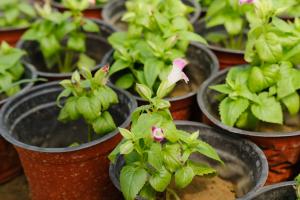How would you detect plant water stress from space?
Water stress is a condition where a plant is not getting enough water. This can be due to drought or other factors. Detecting plant water stress from space is important for farmers, researchers, and policymakers to understand and address the issue. In this article, we will explore various methods and technologies to detect plant water stress from space.
Spectral indices
Spectral indices are one of the most commonly used methods to detect plant water stress from space. These indices are calculated based on the ratio of reflected light in two or more wavelengths. One such index is Normalized Difference Vegetation Index (NDVI). NDVI measures the amount of chlorophyll present in vegetation using the ratio of the reflected light in the near-infrared region and the red region. As plants undergo water stress, the amount of chlorophyll decreases, leading to a decrease in NDVI value. Hence, a lower NDVI value indicates plant water stress.
Thermal imaging
Thermal imaging is another method to detect plant water stress from space. Thermal cameras detect the temperature of objects and convert them into an image. When a plant undergoes water stress, its transpiration rate decreases, and the plant experiences less cooling effect due to the evaporation of water. The plant becomes warmer than the surrounding area, which can be detected using thermal imaging. Thus, thermal imaging can provide a map of plant water stress based on temperature differences.
Microwave remote sensing
Microwave remote sensing is a relatively new method to detect plant water stress from space. It uses the interaction between microwaves and plants to measure the amount of water present in the plant. As water stress increases, the amount of water decreases, leading to a decrease in the strength of the microwave signal. Thus, microwave remote sensing can provide a quantitative measure of plant water stress, which can be used to identify stress hotspots and make informed decisions.
Conclusion
In conclusion, detecting plant water stress from space is a crucial task to ensure sustainable agriculture and ecosystems. Spectral indices, thermal imaging, and microwave remote sensing are some of the methods that can be used to detect plant water stress. Each method has its advantages and limitations, and the choice of method depends on the specific application. Combining multiple methods can provide a more comprehensive understanding of plant water stress, leading to effective management strategies.

 how many times do yo...
how many times do yo... how many planted tre...
how many planted tre... how many pine trees ...
how many pine trees ... how many pecan trees...
how many pecan trees... how many plants comp...
how many plants comp... how many plants can ...
how many plants can ... how many plants and ...
how many plants and ... how many pepper plan...
how many pepper plan...





























